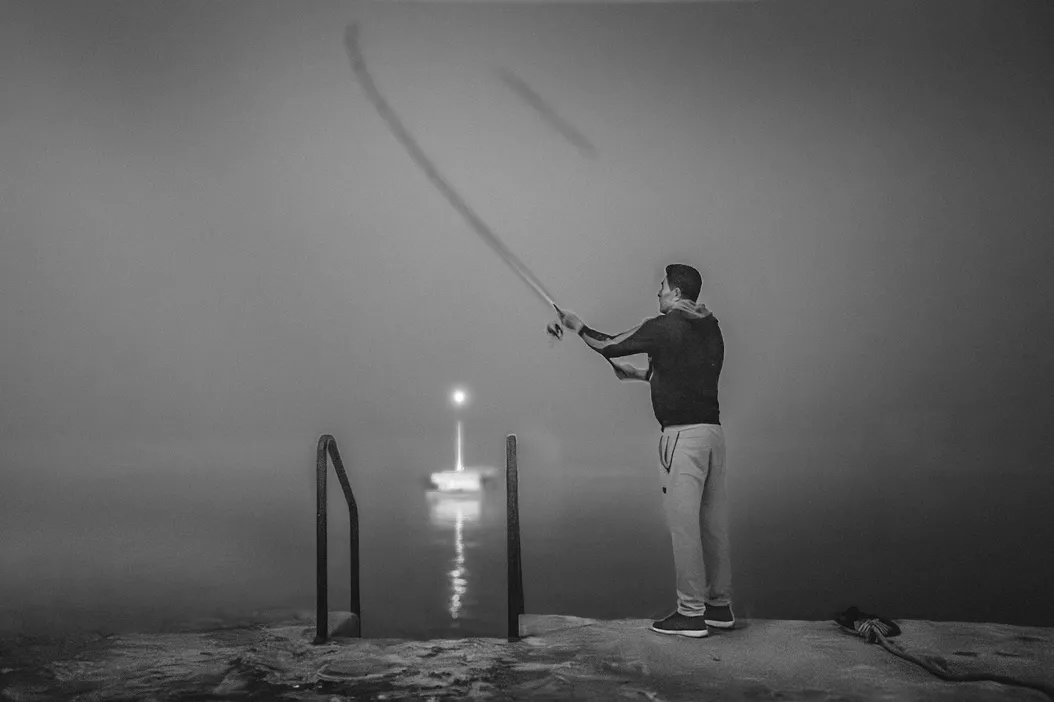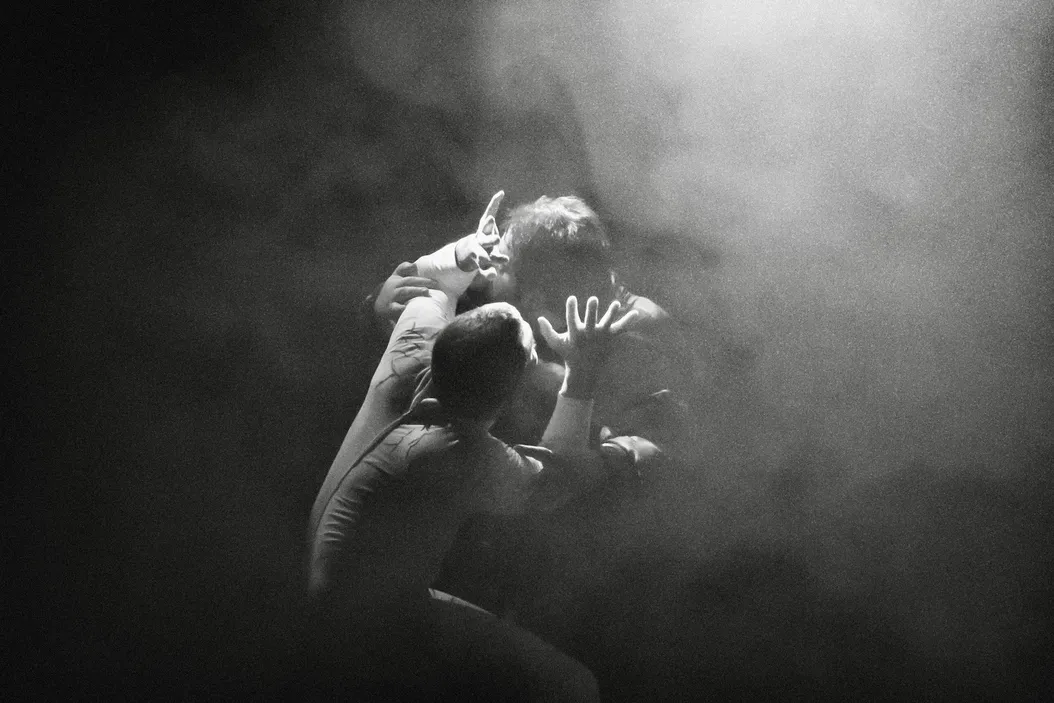If you could build a Terminator to strike fear into the halls of power, what skills would it have?
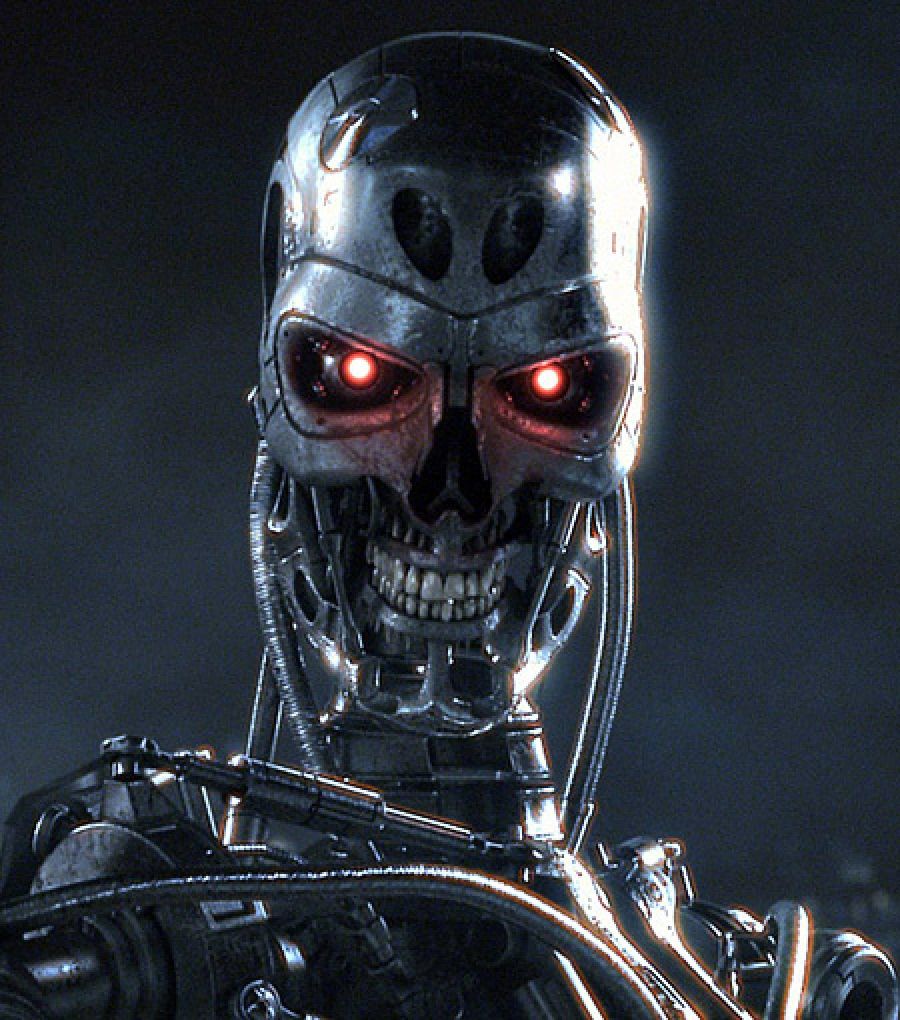
This week I’ve been working on recruiting a new head of communications for the progressive movement DiEM25. It’s a key campaigning position, and we’ve seen many great candidates.
The process made me wonder about the perfect mix of skillsets for making change happen. So here's a sketch of that, which I will revise over time.
But first…
Some notes
- The model is unscientific – it's based only on my experience as a campaigner and political consultant. The profiles are caricatures for the sake of clarity.
- Please don’t look at it and wonder which profile you have. That’s not the point :). Each of us has a mix of these profiles (and many other skills too). The names I've used are just labels for skillsets that work well for campaigning. And ‘the creative’ sounded better than ‘the creative skillset’.
- What’s more interesting is: Which profile is more dominant in you, most of the time? Which of your profiles could be strengthened? Which shortcomings could you depend on others in your campaign to cover?
- On that note — all of these skills can be learned. Talent is the desire to practice.
- There is a tension between these profiles that can make a magical campaign happen. But sometimes, in a team, this tension spills over into discord (see the graphic at the end).
OK? Let’s go.
A rough model
The ideal campaigner is a blend of three profiles.
The wonk understands the complex landscape of your subject matter.
The creative has the innovative ideas for change to happen.
And the do-er makes it happen.
The wonk
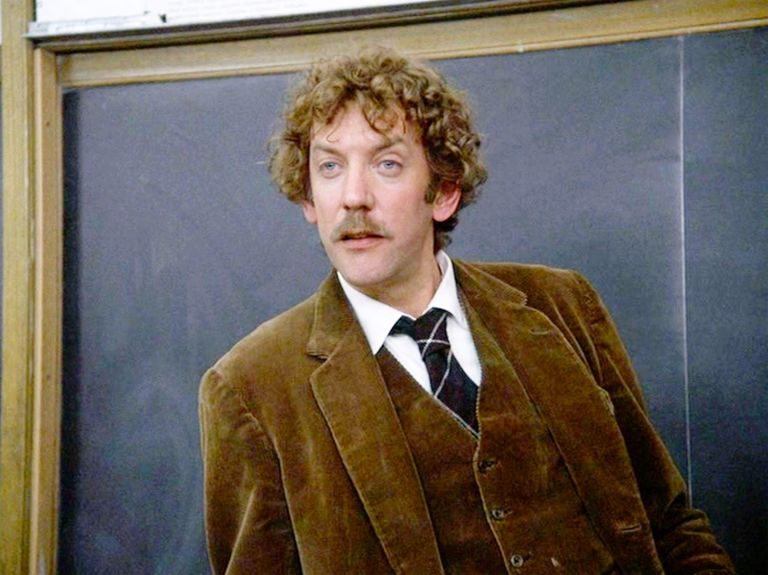
The wonk is the subject matter expert. They understand the complexities and subtleties of the cause you are pushing for. They say “This is where we need to go.”
In a political movement, the wonk is the person who gets the policy and the players and the history. In a group building a school for alternative education, the wonk knows the holes in the existing syllabus, and what a better one could look like. If you’re campaigning on the climate or COVID, the wonk knows the science inside-out.
The wonk sees the big picture; the ‘what’ of your campaign. They’ve written about it, studied it, and watched more than a few YouTube lectures on it.
They speak the language of an insider, and can hold their own with any expert on the topic. If you’re organising an event to discuss your issue, they’ll know who to invite as speakers.
The wonk keeps your campaign grounded, and gives it gravitas.
But since they're an expert, they often identify strongly with a position, and aren’t open to shifting their views. They can be deferential to power, and can slip into spectating or commentary mode, instead of trying to bring about change.
The creative
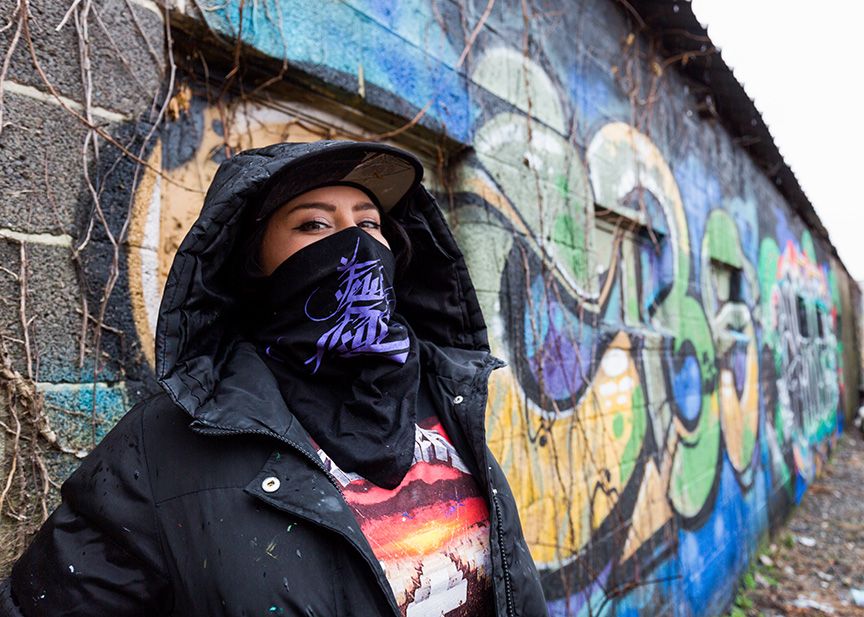
The creative is the person with the ideas. They push everyone else to experiment. They say “Why not?”
They always have the audience in mind. What will delight them?, the creative thinks. What will switch them on, win them over?
The creative is the person who says let’s put a bulldozer outside the developer’s mansion and ask him on camera how it feels when someone's threatening your home. Who finds the biggest rubber duck in town and protests with it on a boat. Who brings the humour, where appropriate, into the sober business of fighting for change. Because they know it will resonate with an audience.

The creative doesn’t just work on tactics, though. They also find new ways of doing things in the campaign that others hadn’t considered. They are radical and subversive by nature. They want to rip up the rule book.
The creative can express complex ideas easily across different media — speaking, writing, visual. They're obsessive about detail. And they care about how something feels, not just how it looks. Because they know people engage with emotion.
But they often identify emotionally with their own ideas, too, and don’t like to abandon them. They hate compromise, and can be difficult to work with. Sometimes they make the perfect the enemy of the good. And they are quick to throw out the old ways… even if those old ways had been delivering results.
The do-er

The do-er is the closer. They know that impact means achieving your Ultimate Goal. They care about making change happen.
They have a bias towards action. They say “screw it, let’s do it.” Or “How can I help?”
The do-er recognises compromises are inevitable, and can motivate a team to accept them and move forward. They take responsibility when things go wrong, and capture lessons for next time.
They prioritise ruthlessly, because they know that when everything’s important, nothing is. And they know when it’s time to stop talking and take a decision.
But sometimes, the do-er gets distracted by their need for action. They are often willing to cut corners to get a result. They rush into doing, and this can lead to mistakes, wasted energy, and friction. If unchecked, they can make the whole campaign counterproductive.
These profiles in practice
Here are some examples of what makes these profiles distinct.
| The wonk | The creative | The do-er | |
|---|---|---|---|
| Writing a manifesto? | Brings the detail | Brings the passion | Turns it into something that can sell |
| On their shelf? | Gramsci | WeeGee | Tony (Robbins) |
| Favorite player on climate change? | Bill McKibben | Steve McCurry | Greta McThunberg |
| First thought after leaving a meeting with a decision maker? | “I hope I didn’t come across as stupid” | “That guy was wearing different socks” | “How could we use him?” |
| Idolises? | Chomsky | Banksy | Musk(y) |
| Watches? | Yes, Prime Minister! | Kurosawa movies | TED talks |
OK, you get the idea.
Tensions
Let’s say your team is hard at work on a campaign. Certain profiles will be dominant in certain people at a given moment. Here's a diagram of what each profile is probably thinking about the other, leading to collisions.
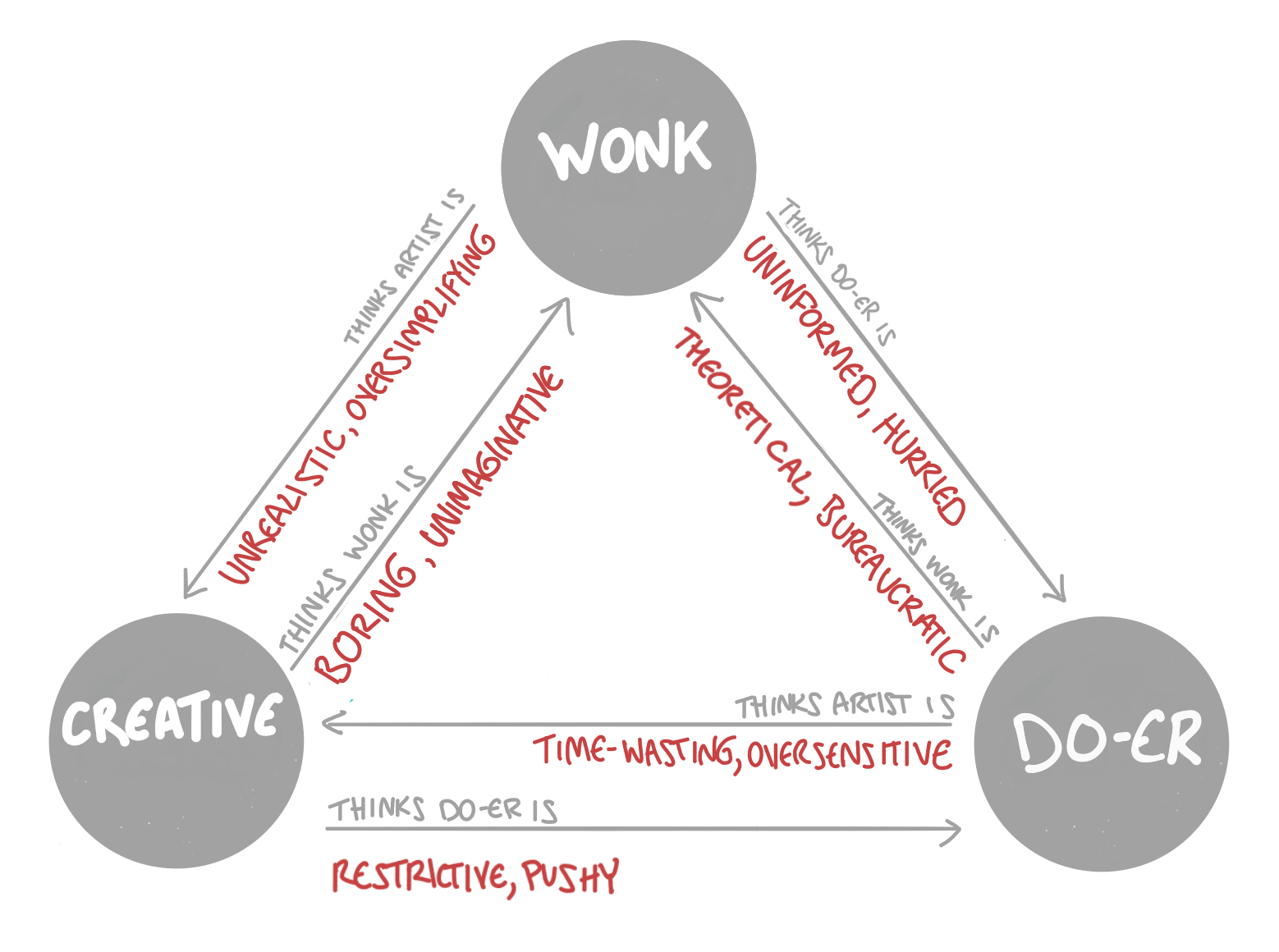
How can you resolve these tensions? Maybe you don’t need to: natural tensions and differences push teams to deliver better. They rein in your worst tendencies, forcing you into necessary compromises.
But if tensions becomes toxic, then the only answer to overcome them is: professionalism. Which is hard to find, especially with volunteer teams.
Why you need all three profiles in a campaign
I couldn’t leave this first draft of a model without a Venn diagram, so here we are. This shows the mix of each profile and the types of campaign that can result.
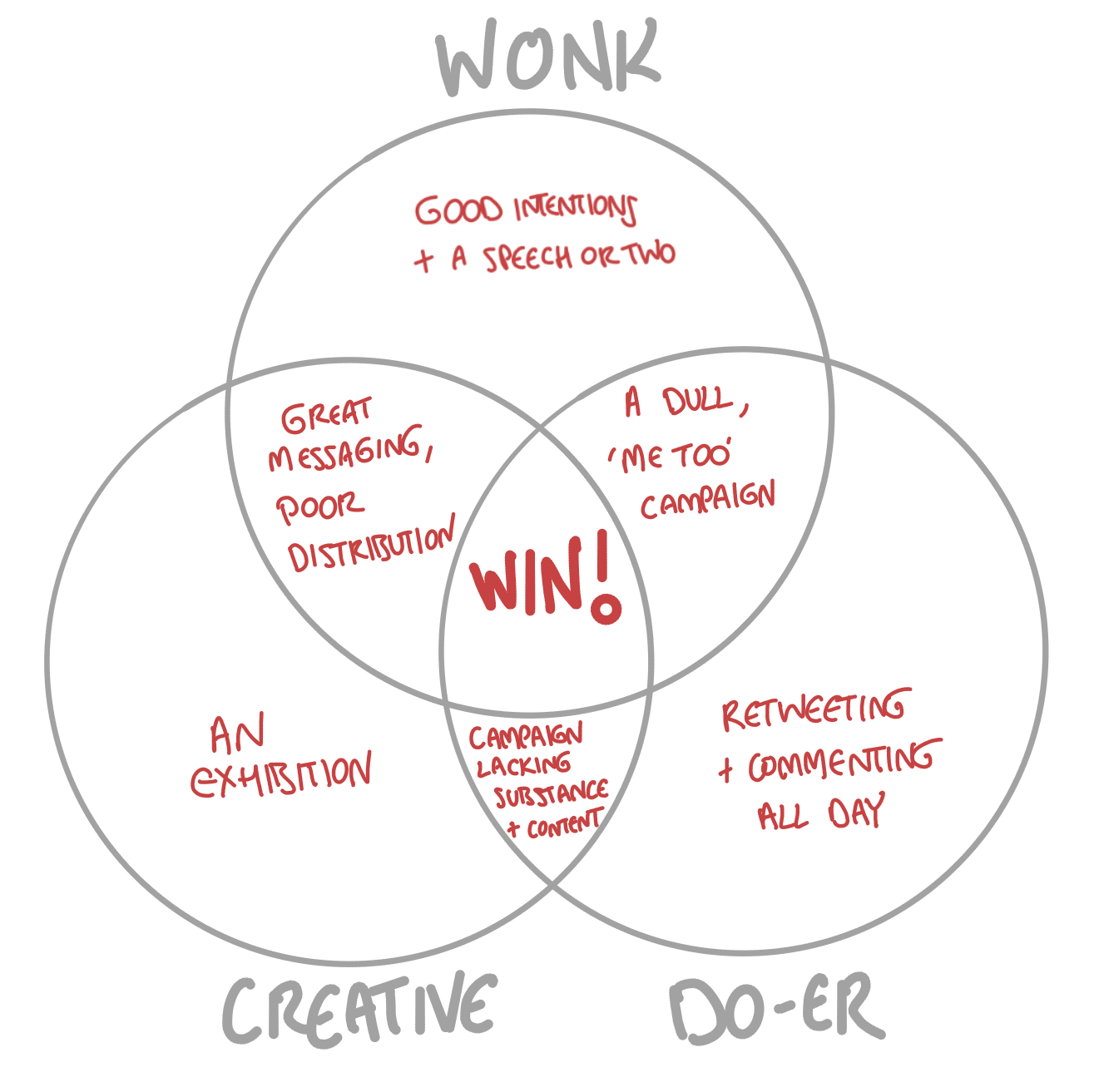
A campaign without a creative will look and feel like everyone else's – and will probably fail like them too. Without a wonk, it will lack substance which will keep it stalled.
And without a do-er, it will generate noise but no impact.

